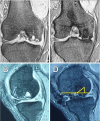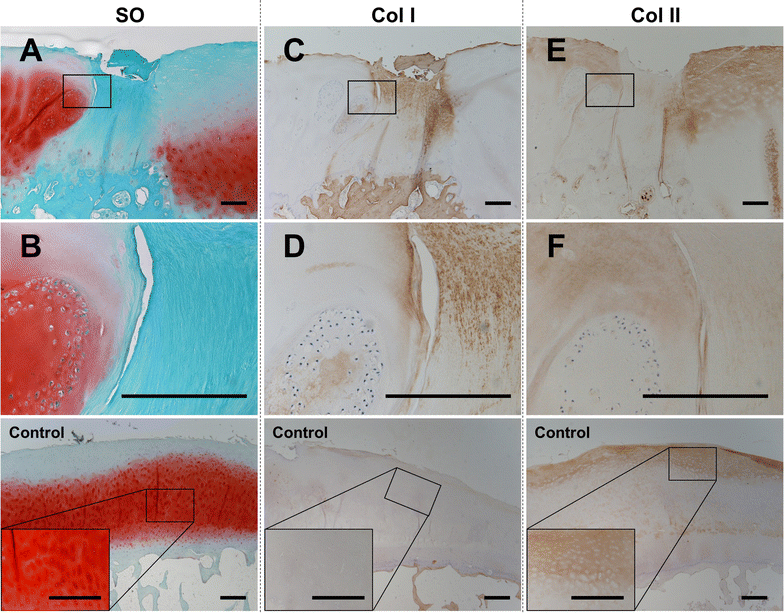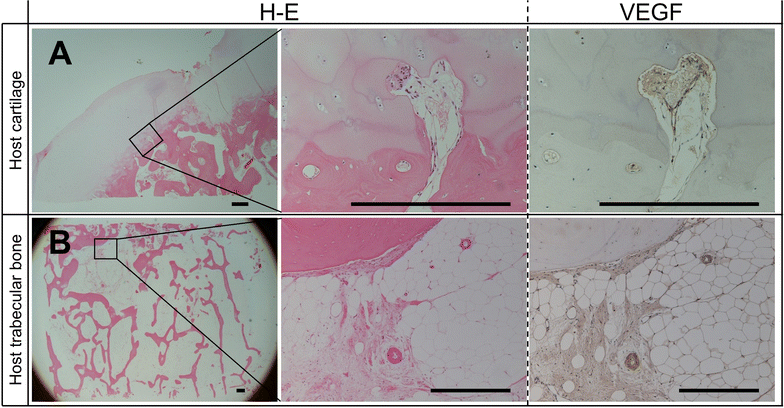Pathohistological investigation of osteochondral tissue obtained during total knee arthroplasty after osteochondral autologous transfer: a case report
- PMID: 28587673
- PMCID: PMC5461697
- DOI: 10.1186/s13104-017-2513-0
Pathohistological investigation of osteochondral tissue obtained during total knee arthroplasty after osteochondral autologous transfer: a case report
Abstract
Background: Osteochondral autologous transfer is one of the repair techniques for cartilage defects of knee with promising knee function recovery. There are no reports including histopathological images concerning human osteochondral tissue after osteochondral autologous transfer. This is the first report to present pathohistological findings of transplanted plugs and host tissues extracted from the human body 3 years after osteochondral autologous transfer. This study aimed to explore the cause factor of chronic pain using histological techniques.
Case presentation: A 67-year-old Japanese man presented with adjusted total knee arthroplasty 3 years after osteochondral autologous transfer. Although in pain, arthroscopic assessment was not severe. The specimens which was gained during total knee arthroplasty were investigated in gross and microscopically using immunohistochemical staining technic. Histological examination revealed that the gap between grafted plugs and host osteochondral tissues was filled with fibrous tissue that stained positive for type I collagen. A degenerative change and some neovascularity were observed in the regenerated tissue and host trabecular bone. Furthermore, cysts and bone marrow edema were observed.
Conclusion: Our data suggests that the host osteochondral morbidity around grafted plugs might be related to chronical pain and revision surgery.
Keywords: Bone marrow edema; Case report; Osteochondral autologous transfer; Pathohistology.
Figures




References
Publication types
MeSH terms
Substances
LinkOut - more resources
Full Text Sources
Other Literature Sources
Medical
Miscellaneous

